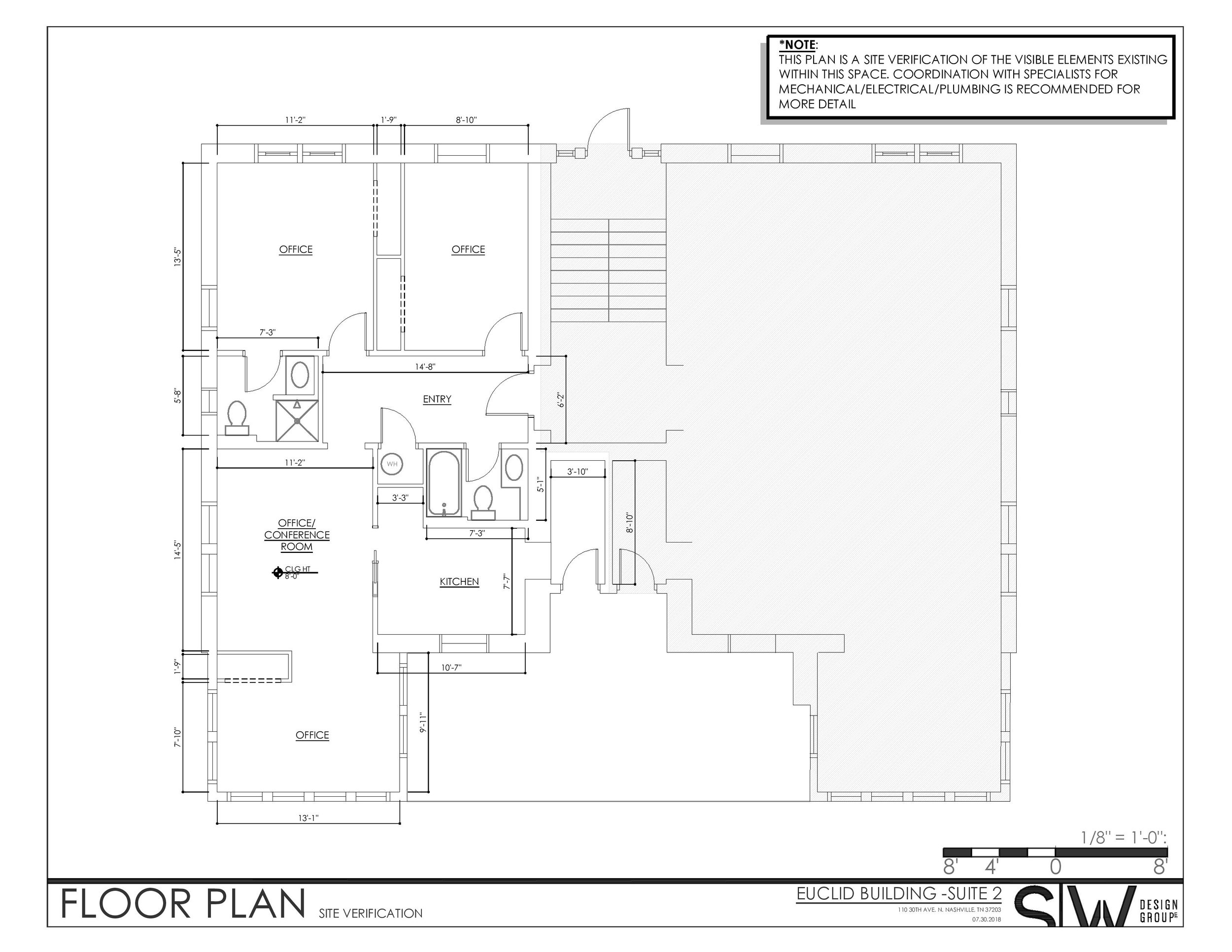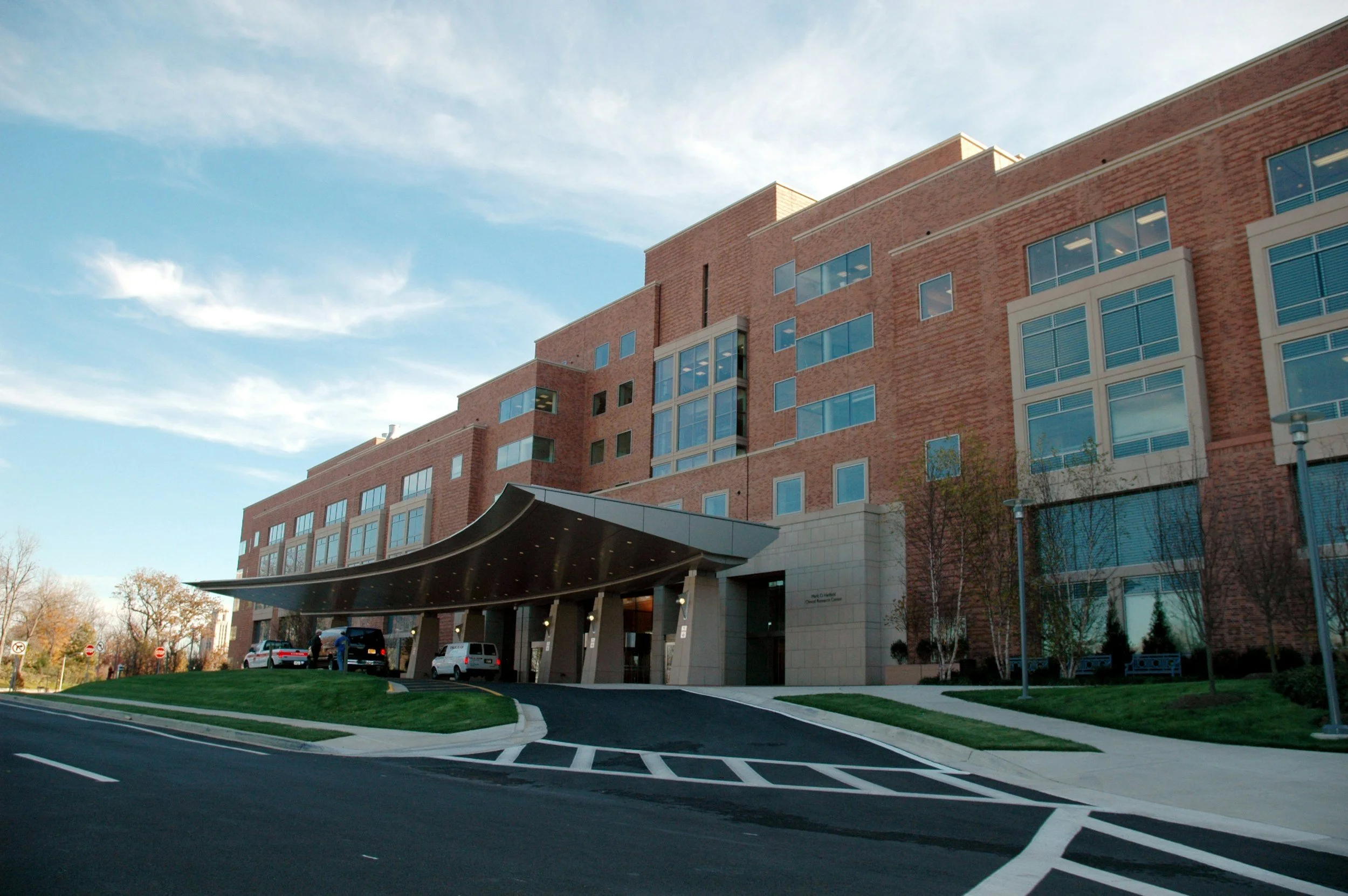
Live-Work Space
Live-work space is any type of real estate that is zoned for both residential and commercial uses.
Most zoning codes (and therefore, most projects) are either one or the other - restricting your ability for both.
The convenience to live and work in the same space is a rarity in Nashville these days.
It's not very often that you'll come across a project suitable for this use, but new construction is picking up.
With traffic on the rise and the freedom to work from anywhere, many entrepreneurs are looking to an "all in one" solution with live-work space.
110 30th Avenue North
110 30th Avenue North, also know as Euclid Court, is zoned Office/Residential Intensive - allowing for both residential and commercial occupants.
Located one block off West End, Euclid Court is walking distance to Duet Boutique, Bricktop's, and Centennial Park.
Midtown is a shopping and business hub, thanks to Vanderbilt University and ease of access to I-440 / I-65.
You're also only 10 minutes from downtown - not to mention 21st Ave and Hillsboro Village.

What's Available at Euclid Court
The owners prefer to lease 110 30th Ave North but will also consider a sale.
The condo is 1,196 square feet and features two bedrooms (or offices), two full baths, a living room, a study, and a full kitchen with storage.
The suite is well-balanced between an open and private floor plan and has abundant light since it's a corner unit.
One assigned parking spot comes with the unit and there is open street parking on all sides of the building.
Looking for a location convenient to the amenities of midtown where you can live and work?
You've found it here.
If you study the portfolios of the world’s most successful family offices, you’ll find a common thread running through them: commercial real estate.
Not because it’s trendy.
But because it’s stable, strategic, and built to last.
While equities and private markets may generate bursts of upside, CRE offers something far more valuable for multigenerational families: consistent income, tax advantages, tangible control, and the ability to compound wealth quietly over time.
Real estate is the asset class that pays dividends in every decade—not just in bull markets. It’s what allows families to shift from wealth creation to wealth preservation without giving up growth. And perhaps most importantly, it provides a platform for educating the next generation—through ownership, stewardship, and real-world decision-making.
In this post, we’re going to walk through exactly how family offices use CRE to build generational wealth:
The strategies they employ
The mistakes they avoid
And how you can structure your own portfolio for lasting impact
This is the playbook that’s helped hundreds of families move from high-income to high-legacy. Let’s dig in.
While most commercial real estate investors have spent the past decade chasing industrial, luxury multifamily, or trendy retail, another asset class has quietly delivered steady returns, long-term tenants, and recession-proof demand—without the hype.
I’m talking about Medical Office Buildings (MOBs).
These properties aren’t flashy. You won’t find rooftop lounges or valet parking. But behind the understated brick façades, MOBs house one of the most resilient and overlooked income streams in commercial real estate.
And right now, they represent a $400 billion opportunity that more investors are starting to notice.
Healthcare is growing—and it’s not slowing down. Outpatient care is expanding. Aging demographics are driving demand. And while other property types wrestle with remote work and market oversupply, medical tenants are signing long-term leases and sticking around.
In this post, we’ll break down what MOBs are, why they’re thriving in today’s market, and how savvy investors are using them to create predictable cash flow and durable value—even in uncertain times.
For the past decade, luxury apartments have dominated real estate headlines—and investor attention. Sleek downtown towers, rooftop pools, and Class A rents felt like the gold standard. But in 2025, the cracks are showing.
Across the country, we’re seeing rising vacancy rates, flatlining rents, and a flood of new high-end units hitting already saturated markets. Combine that with inflation, elevated interest rates, and construction costs that just won’t quit, and suddenly, that “can’t-miss” luxury multifamily project doesn’t pencil like it used to.
Meanwhile, the most seasoned investors—the ones focused on cash flow, downside protection, and essential demand—have already pivoted. They’re moving capital into real estate assets that don’t rely on trends or trophy aesthetics. Assets that deliver consistent occupancy, predictable income, and long-term tenant need.
In this post, we’re breaking down the asset classes that are taking over where luxury apartments are falling short—from flex space to medical offices—and why they’re attracting everyone from family offices to first-time CRE buyers.
If you’re thinking about what to buy next (or what to avoid), this is your roadmap.
Successful investors—from high-net-worth individuals to family offices and long-time CRE pros—know to use one of the most powerful tools in the IRS tax code: the 1031 exchange.
It’s not a loophole. It’s not a trick. It’s a well-established strategy that allows you to sell investment property, defer capital gains taxes, and reinvest your full equity into another deal. No tax bill, no reset. Just uninterrupted momentum for your portfolio.
And if done strategically, it’s how some investors go decades without paying capital gains—building cash flow, appreciation, and generational wealth along the way.
In this post, we’ll break down exactly how 1031 exchanges work, why they’re so valuable, and how the most successful real estate investors use them to scale their portfolios. Whether you’re looking to trade up into a triple net asset, diversify markets, or reposition your real estate for retirement or legacy, this is a strategy you need to understand—and use.
If you’re managing wealth in 2025, commercial real estate isn’t just an alternative asset anymore—it’s the anchor.
Family offices, private investors, and institutional advisors have spent the last few years rethinking their approach to portfolio strategy. COVID reshaped where people live and work. Inflation pushed investors to look for hedges with real, tangible value. And the demand for consistent cash flow has never been stronger.
So where are the pros putting their capital now?
They’re looking beyond the traditional playbook. Think last-mile logistics hubs, life sciences campuses, and even suburban strip malls with service-based tenants. They're reallocating from shaky office towers into flex properties, recession-resilient retail, and credit-backed NNN assets.
Wealth managers aren’t just buying square footage—they’re buying stability, scalability, and simplicity.
When most people think about how billionaires build wealth, their minds immediately go to flashy assets: tech stocks, venture capital, high-rise development deals. But if you take a closer look at the real estate portfolios of the wealthiest investors in the world, you’ll find something much quieter—and much more consistent: triple net lease (NNN) properties.
These aren’t the kind of investments that make headlines. There’s no groundbreaking ceremony, no luxury branding, no splashy marketing campaign. But there is one thing that NNNs provide that every savvy investor—from first-time buyers to multigenerational family offices—is looking for: predictable, passive income with minimal responsibility.
Private investors, business owners, and high-net-worth clients all across the Southeast use this strategy to preserve capital, reduce risk, and simplify their real estate operations. Triple net leases are as close to hands-off as it gets in commercial real estate. And in markets like Nashville—where growth is strong and tenant demand is steady—NNNs are more relevant than ever.
In this post, we’ll break down exactly why triple net leases have become a cornerstone of billionaire portfolios, and how you can use them to build steady, low-maintenance wealth. We’ll cover how the lease structure works, what types of tenants make these investments so reliable, and how to think about your exit when it’s time to reposition or trade up.
When most people think of wealth, they picture luxury—cars, watches, private jets. But the truly wealthy? They think in terms of legacy. They build portfolios, not just paychecks. And more often than not, the foundation of that legacy is commercial real estate.
It’s no coincidence:
90% of millionaires own real estate.
Many of the country’s most powerful families—think the Rockefellers, the Trumps, the Pritzkers—used CRE as their vehicle for long-term generational wealth.
And even today, institutional investors and family offices are doubling down on real estate as a hedge against inflation, volatility, and market chaos.
But this isn't just about owning property. It’s about owning the right properties, in the right structures, with the right strategy—and playing the long game.
In this post, we’re breaking down what I call the $100M Blueprint—the long-term, strategic approach wealthy investors use to build and preserve wealth through commercial real estate. Whether you’re starting from scratch or scaling your portfolio, this guide will help you think like the pros and structure your real estate decisions for real legacy.
When the market slows down, most investors go quiet. They assume that if listings are drying up and interest rates are high, there must not be any deals worth chasing.
But here’s the truth: some of the best commercial real estate opportunities show up when everyone else pulls back. It’s in these quieter cycles—like the one we’re in now—that serious investors find motivated sellers, underperforming assets, and creative deal structures that simply wouldn’t exist in a bidding-war environment.
In 2025, deals aren’t dead—they’re just harder to see. You won’t find them on LoopNet or the MLS. You’ll find them through relationships, research, and resourcefulness.
In this post, I’ll show you exactly how to source real CRE opportunities in a slow market. We’ll cover how to tap into off-market inventory, spot overlooked assets, work with the right brokers, and negotiate with sellers who actually want to make a deal happen.
Commercial real estate can be one of the most rewarding investments out there—but only if you know exactly what you’re getting into. On paper, a deal might look perfect: solid rent roll, great location, and what seems like a motivated seller. But if you skip or shortcut due diligence, you’re not investing—you’re gambling.
Due diligence is the process that separates amateurs from professionals. It’s how experienced investors avoid surprises, confirm performance, and protect their capital. It’s not glamorous work. It’s not the kind of thing you brag about on social media. But it’s what makes the difference between a property that cash flows and one that drains your bank account.
In this post, we’ll break down what due diligence actually involves, why it matters at every stage of the transaction, and how to avoid the common pitfalls that trip up less-prepared buyers. Whether you’re purchasing your first flex space or adding a multi-tenant retail building to your portfolio, this guide will help you approach the process with the clarity and caution the best investors rely on.











You don’t see high-net-worth investors unclogging toilets or chasing down tenants for rent checks.
They’re not waking up at 2 AM to field maintenance calls—or spending weekends vetting property managers.
Why? Because they’ve figured out a smarter way to invest in commercial real estate: syndications.
Syndications allow everyday investors to own fractional shares of high-quality commercial properties—without doing any of the heavy lifting. You provide the capital. An experienced sponsor team does everything else. And you get a direct stake in the deal’s cash flow, equity growth, and tax benefits.
It’s how the top 1% scale their portfolios while protecting their time.
And it’s not just for institutions anymore.
In this post, we’re breaking down everything you need to know about CRE syndications:
How they work
Why they’re one of the most powerful tools for passive income
And how to spot the right deals (and the right partners) before you invest
If you’re ready to earn like an owner without the day-to-day stress, this is the strategy you’ve been looking for.